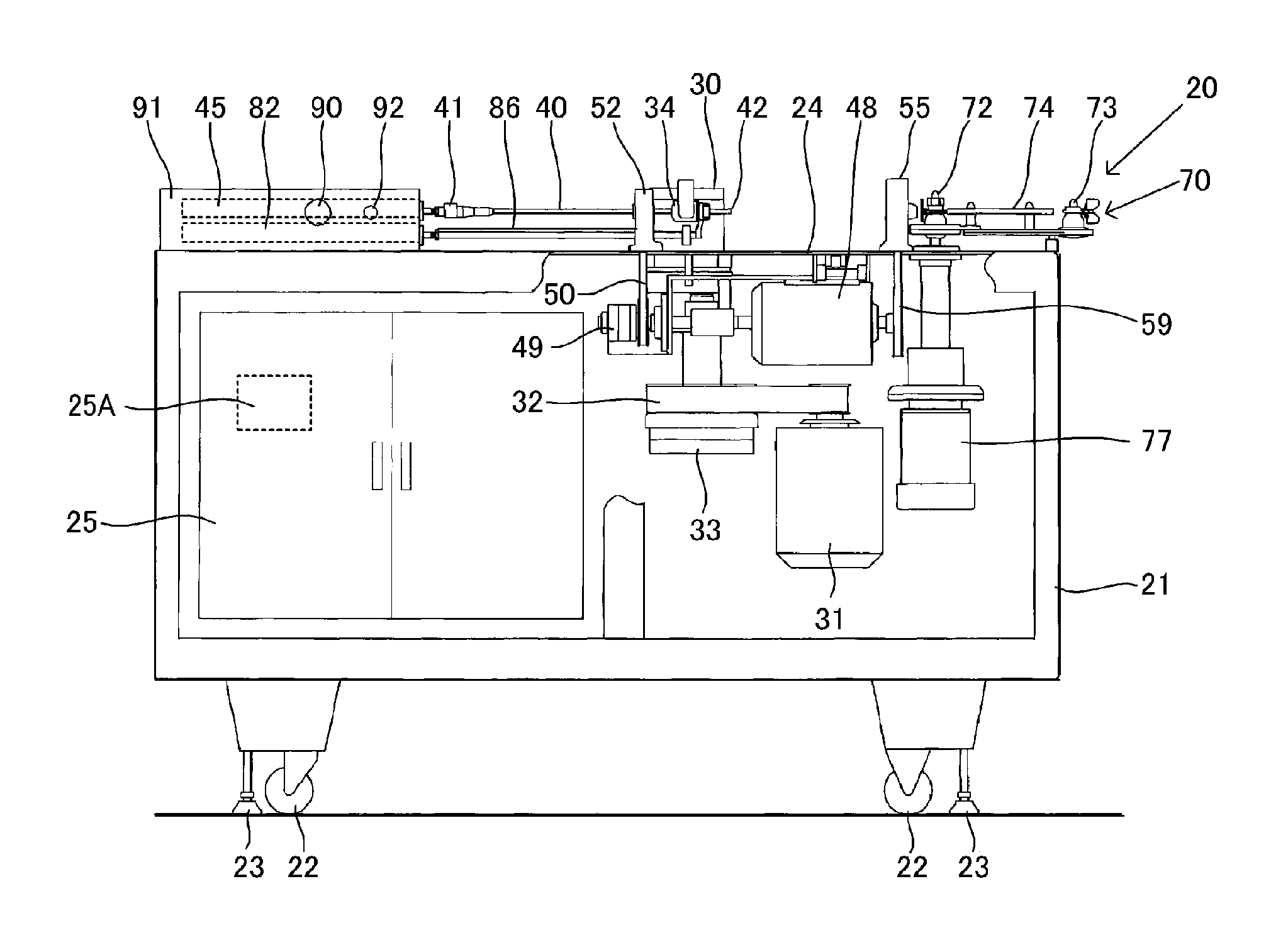Stuffing apparatus and casing breakage detecting device for stuffing apparatus
a detection device and stuffing technology, applied in the direction of sausage casings, sausage shirrings, applications, etc., can solve the problems of more material being discharged to the outside, more material being discharged, waste, etc., to prevent the adhesion of material, prevent non-detectability, and enhance the degree of freedom of an installation place
- Summary
- Abstract
- Description
- Claims
- Application Information
AI Technical Summary
Benefits of technology
Problems solved by technology
Method used
Image
Examples
Embodiment Construction
[0054]Referring now to the accompanying drawings, a detailed description will be given of the embodiment of the invention. It should be noted that it is assumed that, in FIG. 1, the side of a casing pushing air cylinder 82 is a rear side, and the side of a pincher device 70 is a front side.
[0055]A stuffing apparatus 20 has a box-shaped case member 21. The case member 21 is provided with legs 22 and stoppers 23 on its bottom portion and is hence movable. Mounted on its upper surface, i.e., a mounting base 24, are a stuffing pump 30, a stuffing nozzle 40, a braking mechanism 56, a pincher device 70, and the like which constitute the stuffing apparatus 20.
[0056]The stuffing pump 30 feeds a material such as meat, i.e., a stuffing material, into the stuffing nozzle 40. A speed-variable stuffing pump motor 31, a belt 32, an electromagnetic clutch 33, and the like, which constitute the driving mechanism of the stuffing pump 30, are provided in the case member 21 below the mounting base 24....
PUM
 Login to View More
Login to View More Abstract
Description
Claims
Application Information
 Login to View More
Login to View More - R&D
- Intellectual Property
- Life Sciences
- Materials
- Tech Scout
- Unparalleled Data Quality
- Higher Quality Content
- 60% Fewer Hallucinations
Browse by: Latest US Patents, China's latest patents, Technical Efficacy Thesaurus, Application Domain, Technology Topic, Popular Technical Reports.
© 2025 PatSnap. All rights reserved.Legal|Privacy policy|Modern Slavery Act Transparency Statement|Sitemap|About US| Contact US: help@patsnap.com



